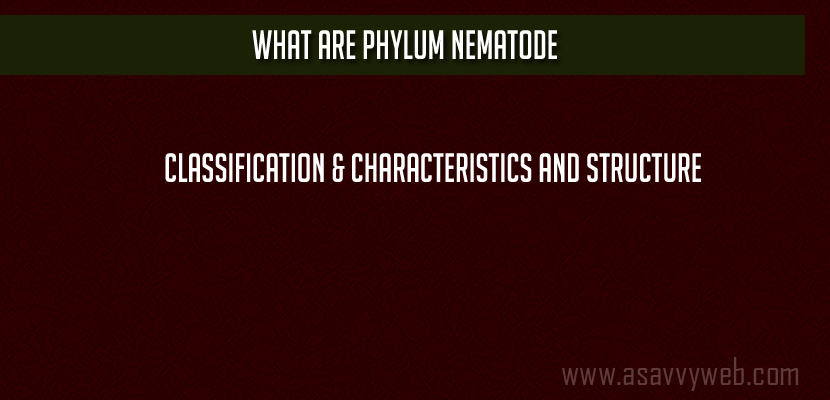The Nematode resembles a tiny thread and it’s a Greek word “nema” means thread and there are 28000 species described and 5 million awaits descriptions found in almost everywhere and abundant in marine, soil, fresh water and soil habitats. Phylum nematode are the most numerous multi-cellular animals on earth with one square meter of top soil may contains several million nematodes and most of them are free living and some are parasitic and sponging and search for bacteria to feed themselves they live under soil and some of the nematodes benefits plants and few of them found are also found on plants eating plant leaves as well. Many species of nematodes are free living in fresh or salt water, mud or soil. They are parasites of both animals and plants.
Nematode Body:
Nematode body can be described as a structure as long, narrow, cylindrical with shrink or taper at both ends. Most of the nematodes are microscopic with average of nematode size of 1mm to 5 mm but nematode can extend to 1m. Nematodes are unused warms and also they are referred as roundworms, roundworms are Nematodes.
Characteristics of Phylum Nematode:
Characteristics of Nematode can be described in brief below:
1- Bilateal symmetry.
2- Tripoblastic.
3- Nematodes have a pseudocoelom which means a tube with in a tube.
4- Pseudocoelom is a closed fluid-filled space that acts as a hydro static skeleton.
5- It helps in circulation and dispersal of nutrients.
6- Nematodes have a complete digestive system and it’s a tubular.
7- Pharynx is a muscular and lumen of the Pharynx is tri radial.
8- Excretory system – two lateral longitude tubes and Nematode do not have circulatory and respiratory system.
Phylum Nematode Lower Classification and Examples:
There are 5 Classification of nematode mainly divided in two classes and both of the classes are free living and paratactic round worms which can live in water and soil and they are:
- Ascaridida
- Secernentea
- Enoplea
- Chromadorea
- Adenophorea

